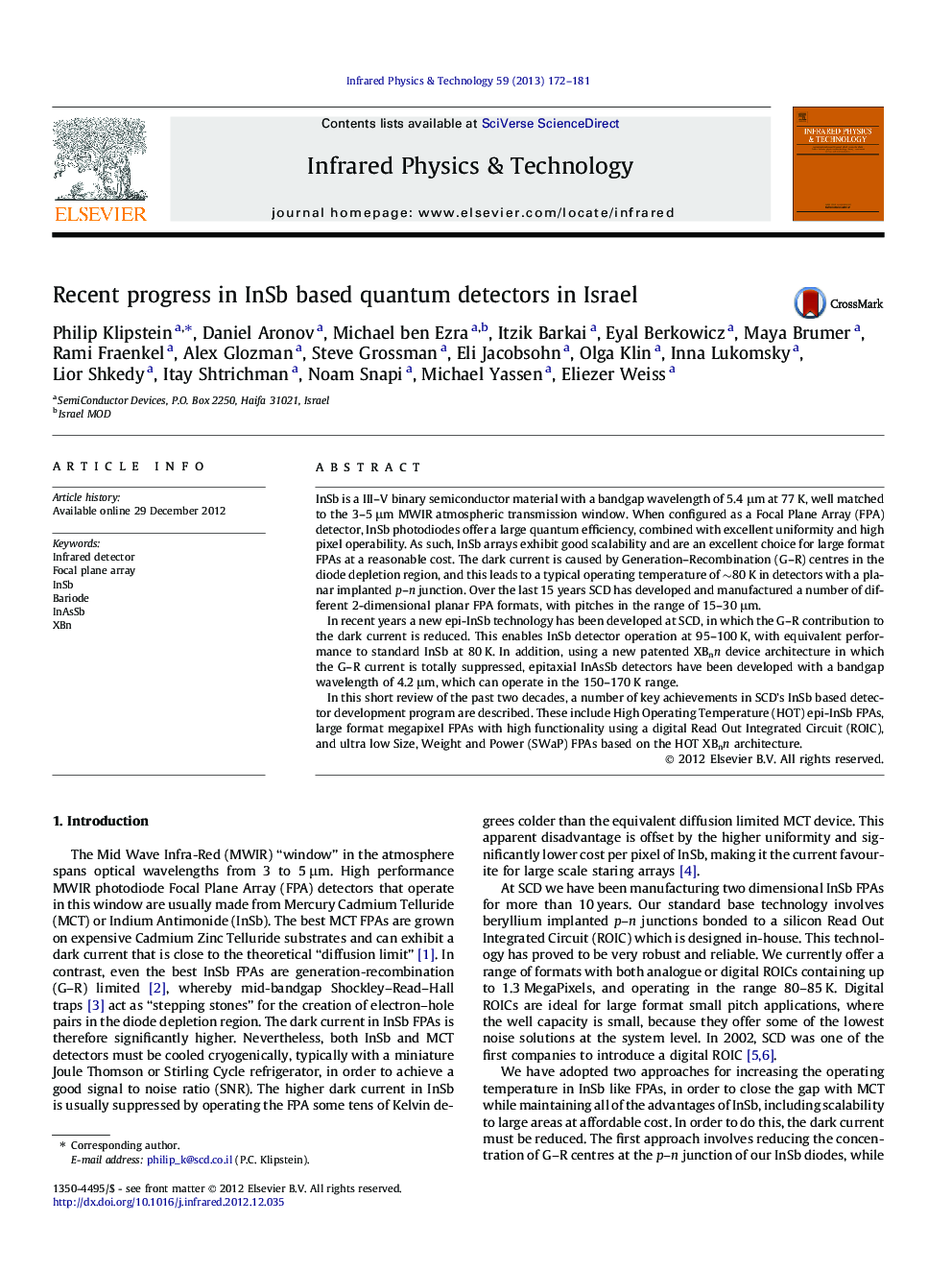| Article ID | Journal | Published Year | Pages | File Type |
|---|---|---|---|---|
| 1784570 | Infrared Physics & Technology | 2013 | 10 Pages |
InSb is a III–V binary semiconductor material with a bandgap wavelength of 5.4 μm at 77 K, well matched to the 3–5 μm MWIR atmospheric transmission window. When configured as a Focal Plane Array (FPA) detector, InSb photodiodes offer a large quantum efficiency, combined with excellent uniformity and high pixel operability. As such, InSb arrays exhibit good scalability and are an excellent choice for large format FPAs at a reasonable cost. The dark current is caused by Generation–Recombination (G–R) centres in the diode depletion region, and this leads to a typical operating temperature of ∼80 K in detectors with a planar implanted p–n junction. Over the last 15 years SCD has developed and manufactured a number of different 2-dimensional planar FPA formats, with pitches in the range of 15–30 μm.In recent years a new epi-InSb technology has been developed at SCD, in which the G–R contribution to the dark current is reduced. This enables InSb detector operation at 95–100 K, with equivalent performance to standard InSb at 80 K. In addition, using a new patented XBnn device architecture in which the G–R current is totally suppressed, epitaxial InAsSb detectors have been developed with a bandgap wavelength of 4.2 μm, which can operate in the 150–170 K range.In this short review of the past two decades, a number of key achievements in SCD’s InSb based detector development program are described. These include High Operating Temperature (HOT) epi-InSb FPAs, large format megapixel FPAs with high functionality using a digital Read Out Integrated Circuit (ROIC), and ultra low Size, Weight and Power (SWaP) FPAs based on the HOT XBnn architecture.
